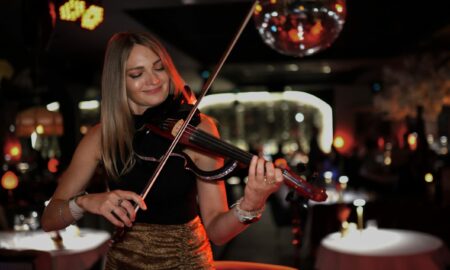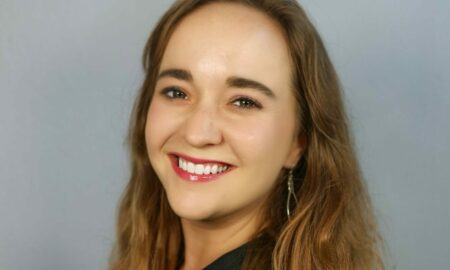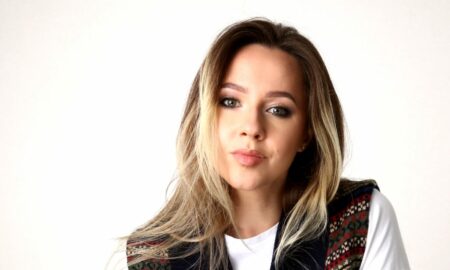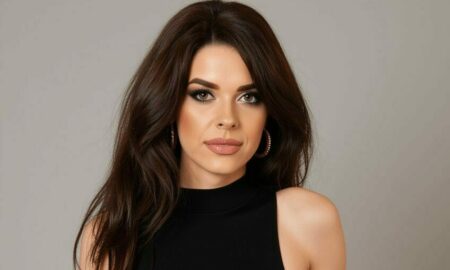 Today we’d like to introduce you to Julia Schwartz.
Today we’d like to introduce you to Julia Schwartz.
Julia, we’d love to hear your story and how you got to where you are today both personally and as an artist.
I grew up in Southern California- in Westwood and then Orange County.
In childhood, my first language was art and first identity were as a maker of art, but my studies after high school were everything BUT art- science, dance, acting, and then medicine. I had another career (as a psychoanalyst) for many years before I came back to painting. I didn’t study art formally, and would consider myself self-taught, other than some night classes in which I learned some basics. I think everything that I have experienced in life- good and bad- contributes to how I make art. I think it has to do with a sensibility, to how things are connected, a sense of the precariousness of life.
I live in Santa Monica and my studio is a converted garage where I work on larger canvas and linen with oil paint (a second room in the house is where I paint late at night). The light and weather have a profound effect on my practice and my work. It’s a pleasure to work in a space with all doors and windows open year-round: the green of the garden and in fact every bit of color outside is embedded in the paintings- all the greens, the blue from the pool, the gray, the purples- of wisteria, morning glory, and lavender, the white-soup sky, and so on, as are the wires and other equipment, rags, dead plants and other paintings that live in the studio. Working at home has advantages and disadvantages- you’re so close to home and you’re too close to home- but it has worked well for me.
We’d love to hear more about your art. What do you do you do and why and what do you hope others will take away from your work?
In general, I feel that all my work reflects my ‘situation’- the geographic, the emotional, the state of the world- and how I am making sense of it. These days my concerns seem to be about how to make sense of the senselessness of the everyday world and the outsized ‘seismic disasters’ that currently include personal loss and grief as well as the geological, political and the cultural.
Materials are oil on linen (when I can afford it) and canvas, and gouache on various kinds of paper- Bristol, yupo, and found and repurposed papers like envelopes, cardboard, cards, and books. I have a real interest in exploring materials that are every day, domestic materials and repurposing them. Each material leads to a world of possibilities opening up, new paths to explore; a human or emotional significance is always an essential through line.
For another body of work which has been ongoing for three years, I have been using found, recovered, or inherited objects – clothes, collectibles and other items- breaking and utilizing the parts or painting on them, altering them as a way to transform grief, or to convey other states of being.
What do you know now that you wished you had learned earlier?
It is helpful to find a community of other artists, especially if you don’t have a built-in cohort/community from art school (which I didn’t). While it’s important to explore what is happening in the world (of art) around you, I find I need time not looking at another people’s work. I want to have my own clear vision of what I’m doing, and not be too distracted or overwhelmed by visual stimuli.
There are things going on in the city every day: talks, openings, events, films, activities. I encourage people to look at sites like ForYourArt, or SeeSaw to name two as a way to track where shows are or events are happening.
Don’t be afraid to approach people- on Facebook, Instagram, or email, or even at shows. You learn a lot from making studio visits and having conversations with other artists. In the end, make your own work; find out what that is and follow your own lead, wherever it takes you.
Do you have any events or exhibitions coming up? Where would one go to see more of your work? How can people support you and your artwork?
I have had work in a number of group shows this year and I’m getting ready for a solo show at Visitor Welcome Center in Koreatown in July. http://www.visitorwelcomecenter.org. You can also find my work on Artsy via John Wolf Fine Art, on my website, and I’m happy to have visitors to the studio.
Contact Info:
- Website: www.juliaschwartzart.com
- Phone: (310)713-3613
- Email: [email protected]
- Instagram: https://www.instagram.com/juliaschwartzstudio/








 Image Credit:
Image Credit:
Julia Schwartz
Getting in touch: VoyageLA is built on recommendations from the community; it’s how we uncover hidden gems, so if you know someone who deserves recognition please let us know here.



















